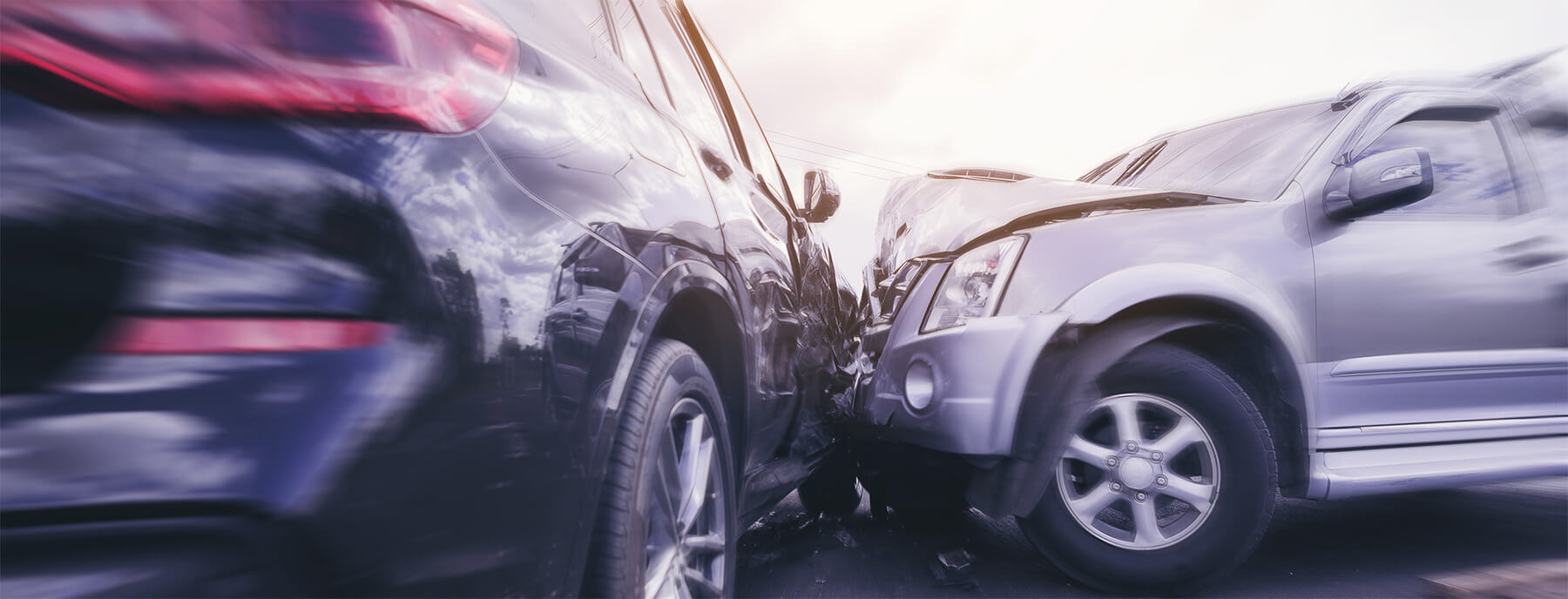
Real Injuries. Real Lawyers. Real Justice. Rear-End Collision Lawyer
ace law group
Verdicts & Settlements
$38.8
Million
Wrongful Death Jury Verdict
$7.1
Million
Award in Vehicle vs. Pedestrian
Accident (Traumatic Brain Injury)
Car Accident Types
- Single-Vehicle Accidents
- Tire Blowouts
- Defective Airbags
- Head-On Collision Lawyer
- Rear-End Collisions
- Side Impact Collisions
- Speeding-Related Accidents
- Aggressive Driving
- Distracted Driving Accidents
- Drunk Driving Accidents
- Hit-and-Run Accidents
- Rollover Accidents
- Intersection Accidents
- Improper Turn Accidents
- Unsafe Lane Change Accidents
- Reckless Driving
- Rideshare Accidents
Testimonials
Ace Law group has helped me tremendously with my previous traffic tickets. No need for me to appear in court and they handled my ticket very well. The staff was very communicative with me through the whole process, that persons name is Allen Chan. This will always be my go to for any traffic tickets. Thank you Ace Law.
Patrick and his team at Ace law Group are very professional. I’ve had several traffic issues throughout the years, and ALG has always taken care of them for me. Gone above and beyond. They treat you like a human being. Not just like a dollar sign, like offer law offices do. Highly recommend!
Las Vegas Rear-End Collision Lawyer
Rear-end collisions are among the most common yet complex types of car accidents on Las Vegas roads. Whether you were stopped at a traffic light or slammed into on a busy stretch of I-15, these crashes often result in serious injuries, vehicle damage, and mounting medical bills. Dealing with insurance companies that may downplay your claim or dispute fault only adds to the stress during your recovery.
At Ace Law Group, our award-winning attorneys have over 15 years of experience handling these cases. We’ve secured millions in compensation for our clients, including multimillion-dollar settlements. We specialize exclusively in rear-end collisions, providing focused legal representation.
Our dedicated Las Vegas rear-end collision lawyers handle every aspect of your case, from preserving crucial evidence and documenting injuries to negotiating with insurers. With no upfront fees, our car accident lawyers are ready to ease your burden and advocate fiercely on your behalf. Call us now, our consultation is completely free!
Recent Case Result
We secured a $5 Million settlement for a client injured in a car crash.
Our legal team fought to recover full compensation for medical expenses, lost wages, and pain and suffering.
Call Us Now: (702) 333-4223Why Hire a Las Vegas Rear-End Collision Lawyer?
Hiring a Las Vegas rear-end collision lawyer gives you a legal advantage from day one. A lawyer strengthens your claim, controls communication with insurers, and builds evidence while you focus on recovery.
Role of Legal Expertise in Rear-End Claims
Rear-end collisions might appear simple at first, but legal and insurance issues escalate quickly. Presumptions of fault, causation disputes, and insurer pushback can weaken your position without legal guidance.
An attorney ensures that every element of liability is properly established under Nevada Revised Statutes, that deadlines under civil procedure are met, and that damages are fully documented to prevent undervaluation. Legal expertise transforms a vulnerable claim into a structured case backed by admissible evidence and enforceable rights.
Key Advantages of Hiring a Specialized Lawyer
Rear-end cases demand more than general legal knowledge; they require fluency in collision mechanics, injury causation, and claims defense tactics. A Las Vegas car accident lawyer experienced in rear-end litigation brings:
- Immediate access to accident reconstruction and medical experts.
- Clear understanding of how to challenge low-speed impact defenses.
- Precision in documenting soft tissue and delayed-onset injuries.
- Trial preparation from the outset increases leverage during negotiations.
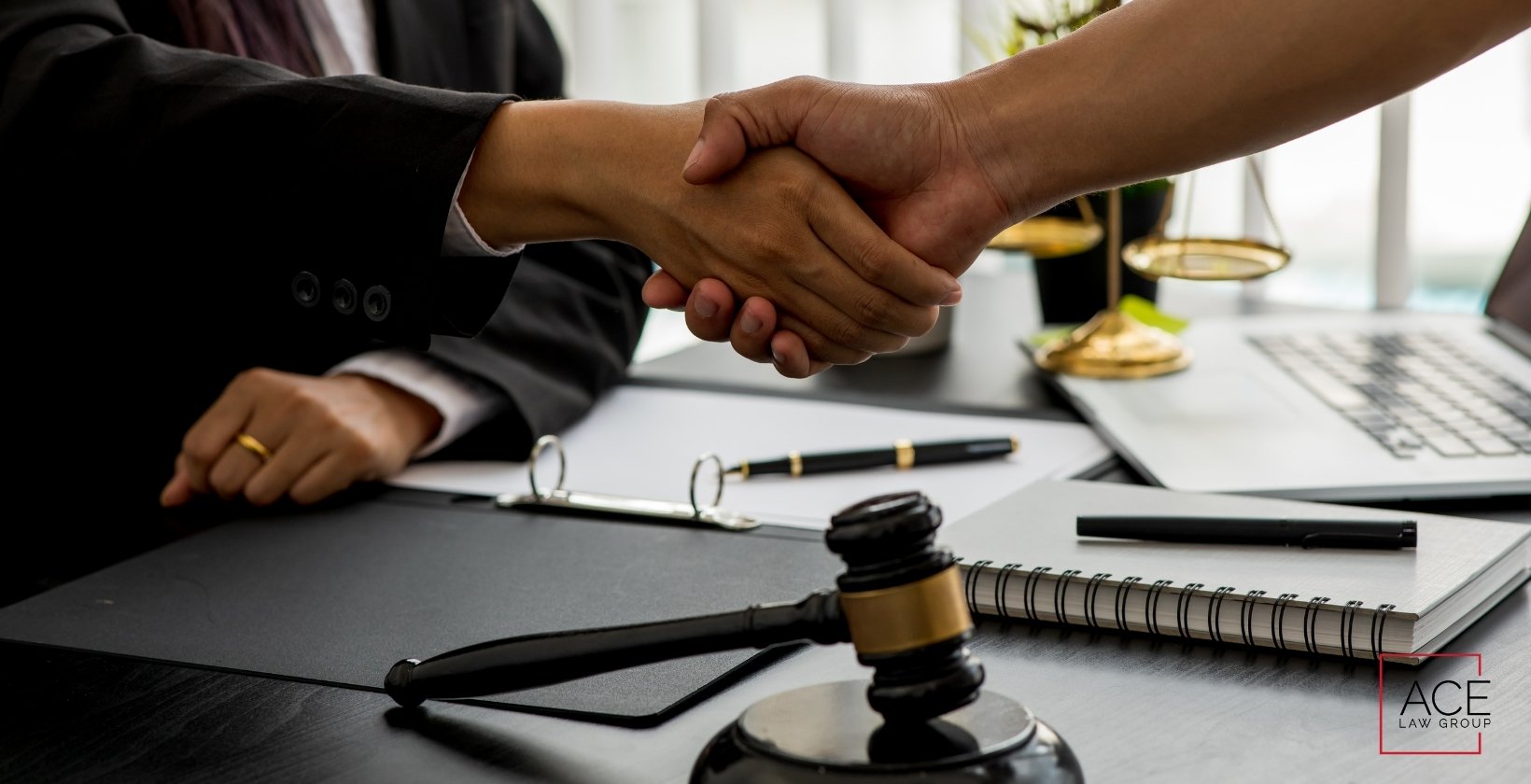
Common Mistakes a Lawyer Helps You Avoid
The aftermath of a crash is disorienting. Without legal support, it’s easy to make decisions that harm your case. Many claimants:
- Speak directly with adjusters who record damaging statements.
- Accept early settlements without understanding long-term medical needs.
- Fail to document evolving symptoms or follow proper treatment protocols.
- Miss filing deadlines under Nevada’s statute of limitations.
A lawyer helps prevent these mistakes by protecting your claim, so you don’t have to manage both legal risk and physical recovery alone.
Call a Las Vegas Personal Injury Lawyer Now!What Does a Las Vegas Rear-End Collision Lawyer Help You With?
A rear-end collision lawyer manages the legal and procedural demands required to establish liability, calculate damages, and enforce your right to compensation under Nevada law. This includes collecting admissible evidence, coordinating with medical experts, negotiating with insurers, and preparing for litigation if needed.
Investigating Fault and Preserving Evidence
Establishing liability in a rear-end collision begins with immediately preserving evidence. Attorneys collect and analyze documentation admissible under Nevada’s rules of civil procedure to support causation and fault.
This typically includes:
- Police crash reports from the Las Vegas Metropolitan Police Department (LVMPD).
- Photographs of vehicle damage, roadway conditions, and injuries.
- Event data recorder (EDR) downloads.
- Witness statements from drivers or bystanders.
- Dashcam or traffic camera footage.
- Expert crash reconstruction reports.
- 911 call logs and dispatch records.
Proving Damages from Rear-End Injuries
Rear-end collisions often lead to injuries that insurers dispute or undervalue, especially when symptoms are delayed or subjective. Proving damages requires more than medical records; it demands legally admissible evidence that demonstrates both causation and long-term impact.
Attorneys work with treating providers and independent experts to gather diagnostic reports, treatment plans, billing statements, and functional impact assessments. This evidence is used to quantify losses, comply with evidentiary rules, and support claims for both economic and non-economic damages. Proper valuation prevents insurers from reducing compensation based on incomplete or unsubstantiated medical data.
Negotiating with Insurance Companies
Insurance carriers often rely on delay tactics, medical disputes, or pre-existing condition arguments to reduce liability. Legal representation is critical to asserting policyholder rights, compelling proper valuation, and holding insurers accountable.
Attorneys manage all communications, issue formal demands supported by documented damages, and respond to bad-faith positions with legal citations and expert opinion letters. A well-developed case often leads to full and timely resolution without the need for litigation.
We Help you Maximize Your Settlement and Fight Back Against Insurance Tactics!.Taking the Case to Trial If Needed
When a settlement cannot be reached, trial becomes the final step in asserting your claim. Preparation includes finalizing discovery, filing pretrial motions, selecting jurors, and organizing expert testimony.
For example, in a multi-vehicle collision on I-15, a defense may argue traffic congestion or sudden stops. An attorney uses EDR downloads, impact angles, and reconstruction analysis to rebut these defenses and demonstrate proximate cause. Trial-readiness alone often pressures insurers to reevaluate their position, but if not, the case proceeds before a jury.
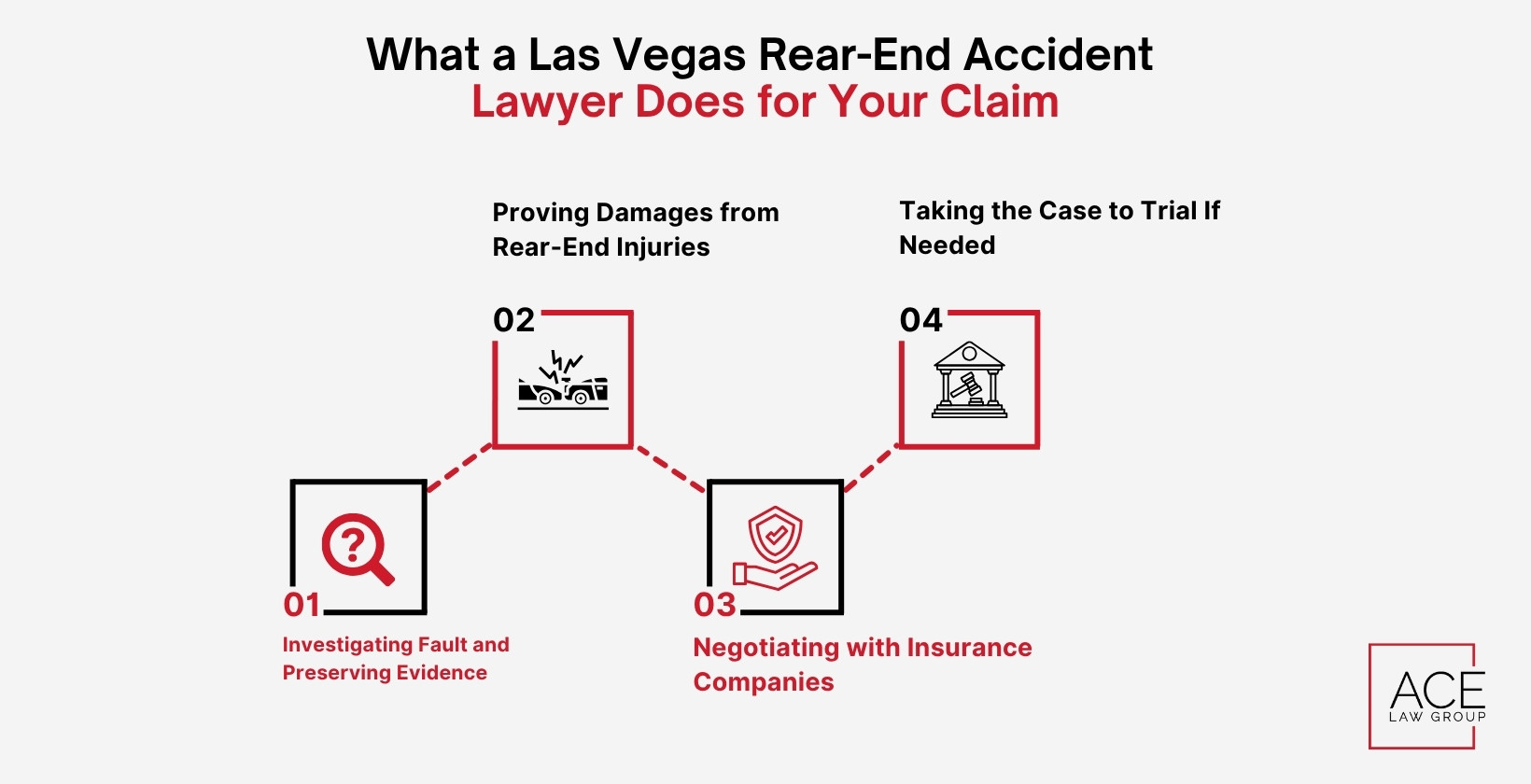
How Does a Rear-End Accident Lawyer Prove Liability Under Nevada Law?
Liability in rear-end collisions is not automatic in Nevada. While the rear driver is usually presumed at fault, that presumption can be challenged with the right evidence. A lawyer proves liability by applying traffic laws, analyzing the cause of the crash, and using evidence to support or shift fault.
Using Crash Reports and Expert Analysis
Crash reports serve as primary evidence in establishing or contesting liability. Under the Nevada Rules of Evidence, these documents must be corroborated with physical findings to avoid sole reliance on officer impressions.
Attorneys pair these reports with EDR (black box) data, trajectory analysis, and expert reconstruction to support or discredit causation claims. These reconstructions clarify speed, braking behavior, and impact mechanics, especially when the presumption of fault is contested.
Rebutting Nevada’s Rear Driver Fault Presumption
Nevada law (case precedent and statutory interpretation) typically presumes that the trailing driver is at fault, based on the duty to maintain a safe following distance. This presumption, however, is rebuttable.
Attorneys challenge the default assignment of liability by presenting contributory negligence from the lead driver, such as reverse motion at the time of impact, lack of brake illumination, or sudden braking without cause. Rebuttal requires credible evidence that alters the burden of persuasion.
Need a Lawyer to Challenge Nevada’s Fault Presumption? Contact Us Today!Applying Traffic Laws and Mechanical Evidence
Proof of negligence often rests on violations of traffic statutes, such as NRS 484B.127 (following too closely), or evidence of mechanical failure. Establishing statutory breaches or vehicle defects directly influences comparative fault distribution.
Attorneys analyze inspection reports, recall notices, traffic citations, and repair records to determine whether the front or rear vehicle was non-compliant with safety or operational standards recognized under Nevada law.
Showing Negligence Through Driver Behavior or Road Conditions
The fault may shift based on the driver’s conduct or roadway hazards that were not initially accounted for in the police reports. Legal arguments incorporate third-party negligence, such as improper lane changes, aggressive merging, or unsafe maneuvers by the lead driver.
Environmental conditions, e.g., road maintenance failures or poor signage, can also factor into liability apportionment. Dashcam footage, weather data, and public records can support fault arguments under Nevada’s modified comparative negligence law.
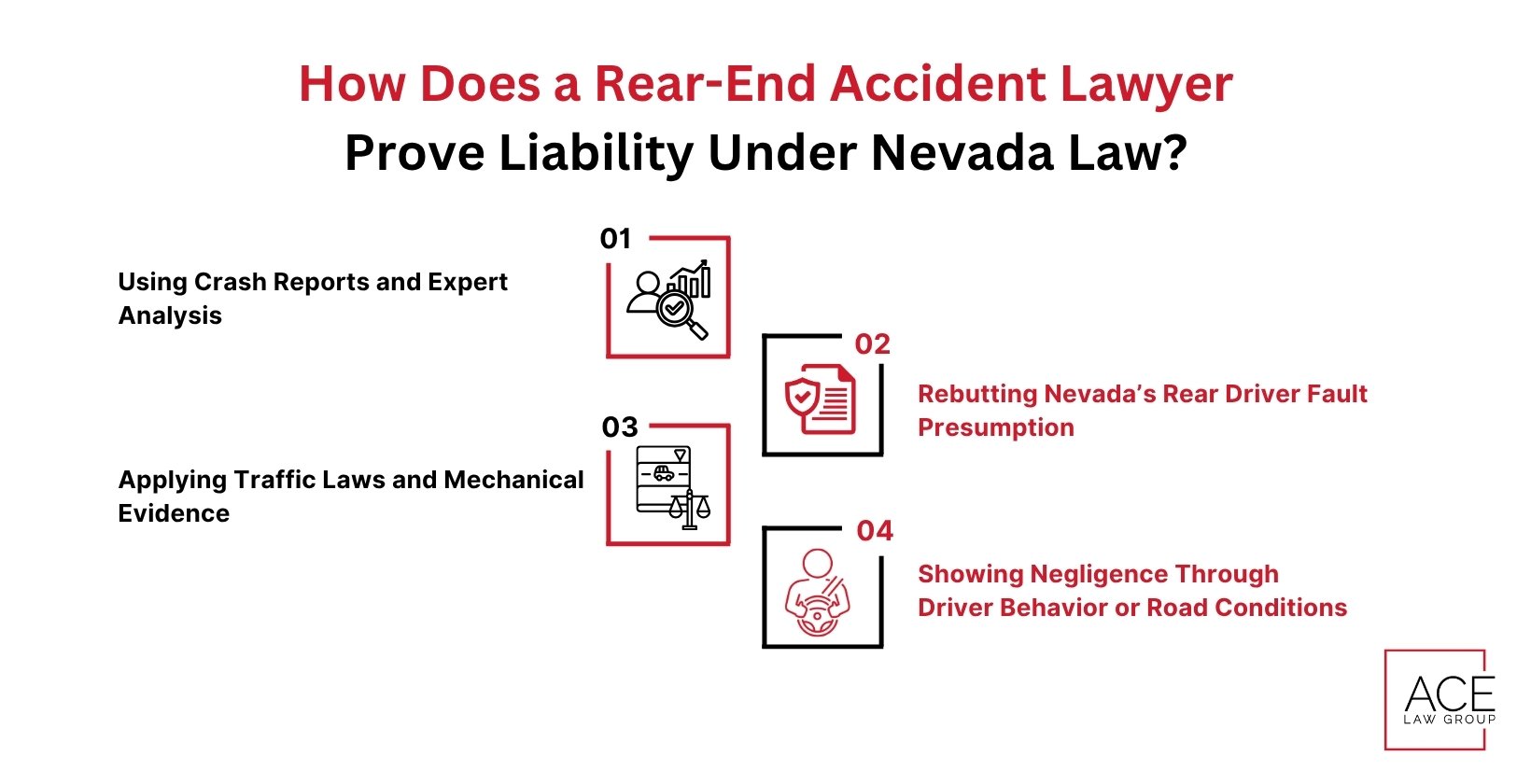
What Makes a Lawyer Qualified to Handle Rear-End Collision Cases in Nevada?
Rear-end accident cases involve legal assumptions, traffic code application, injury causation, and evidence disputes. A lawyer qualified to handle these cases must understand how fault is assigned under Nevada law, how to prove damages, and how to build a claim that meets both legal and procedural standards.
Familiarity with Nevada Statutes and Traffic Violations
Rear-end collisions in Nevada are shaped by statutes such as NRS 484B.127, which governs following distance, and NRS 41.141, which outlines the state’s comparative fault system.
We apply these laws to the facts of each case, particularly when fault is disputed or shared. Knowing how judges and insurers interpret these rules helps us develop stronger legal arguments for our clients.
Ability to Handle Liability Disputes and Injury Challenges
Rear-end crashes often involve disputes over who caused the impact and how severe the injuries are. A lawyer must be prepared to:
- Challenge or support the rear-driver presumption with evidence.
- Present medical findings and expert reports that connect the injury to the crash.
- Address defense arguments that blame the lead driver or question injury timing.
- Prepare the case for litigation if settlement efforts are unsuccessful.
These abilities are critical when insurers dispute the facts or reduce the claim’s value.
Credentials and Recognitions That Matter
Our qualifications reflect both our experience and our commitment to achieving results. Ace Law Group is:
- Rated 10.0 “Superb” on AVVO for car accident litigation.
- Recognized with “Top 40 Under 40” awards for trial advocacy.
- Included in the Super Lawyers Rising Stars list.
- Reviewed positively by hundreds of clients across Google, AVVO, and legal directories.
- Active members of the Nevada Justice Association and the American Association for Justice (AAJ).
These recognitions reflect our experience handling the specific legal and procedural demands of rear-end collision cases in Nevada.

What Types of Compensation Can a Lawyer Recover for Rear-End Crash Victims?
In Nevada, victims of rear-end crashes may recover compensation for both economic and non-economic losses. These include medical bills, income loss, vehicle damage, and the physical and psychological impact of the crash.
Medical Expenses and Long-Term Care Costs
Rear-end collisions often result in injuries that require emergency care and follow-up treatment. Compensation can include:
- Hospital visits and diagnostic imaging.
- Physical therapy or chiropractic care.
- Prescription medications or medical equipment.
- Surgical procedures or recommended future care.
Accurate documentation from physicians and treatment providers helps establish the value of your medical expenses.
Lost Wages and Reduced Earning Capacity
Injuries may prevent you from returning to work or affect your long-term ability to earn. Recoverable financial losses can include:
- Missed wages documented through pay stubs or employer letters.
- Self-employment income verified through contracts, tax forms, or banking records.
- Reduced earning capacity supported by vocational assessments.
These records show the financial effect of the crash on your work life.
Struggling with Lost Wages or Reduced Earning Potential? Get the Compensation You Deserve. Contact Us Today!Pain and Suffering After Rear-End Accidents
Not all losses are financial. Nevada law permits recovery for the physical and emotional effects of an injury, including:
- Pain, discomfort, and physical limitations.
- Emotional distress, including anxiety or depression.
- Disrupted sleep or post-traumatic symptoms.
- Changes in daily activity, mobility, or social life.
Non-economic damages rely on consistent documentation from healthcare providers, mental health professionals, and personal accounts.
Vehicle Repair or Replacement Value
Damage to your vehicle may qualify for compensation beyond basic repair costs. Recoverable property-related losses can include:
- Repair invoices and labor estimates.
- Total-loss value based on market pricing.
- Loss-of-use or rental car costs.
- Diminished value of the vehicle after repairs.
These losses are usually addressed separately from medical and wage-related damages.
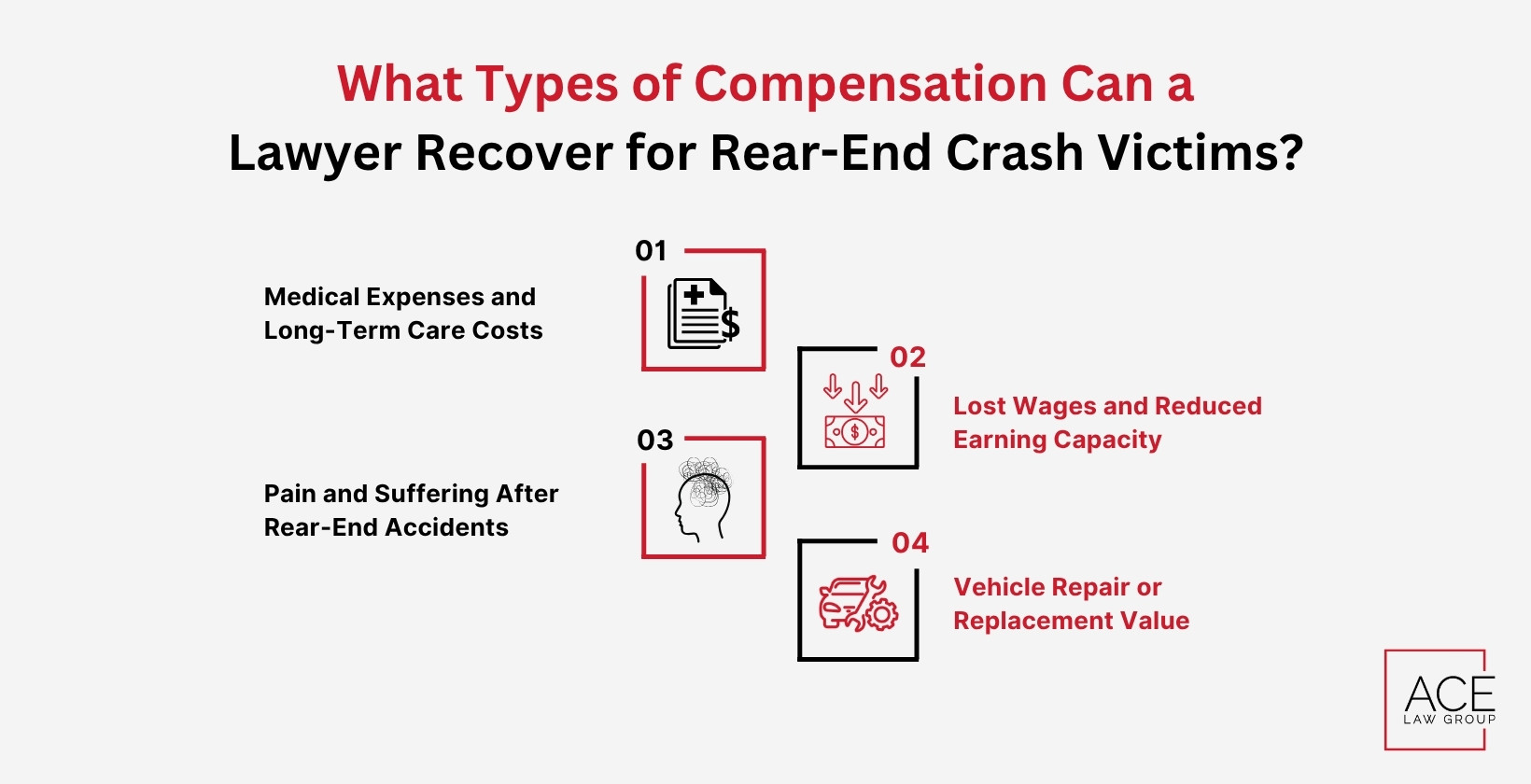
How Nevada Fault Laws Affect Your Rear-End Collision Claim
Nevada follows a modified comparative fault system under NRS §41.141, which directly affects how much compensation you can recover after a rear-end crash. If fault is shared, your payout may be reduced or denied depending on your assigned percentage of responsibility.
Calculating Comparative Fault in Nevada
In disputed claims, each party’s actions are examined to determine their share of responsibility. When a plaintiff is 50% or less at fault, compensation is reduced proportionally. If found more than 50% at fault, no recovery is allowed.
For example, if total damages are $100,000 and your share of fault is 25%, your compensation would be reduced to $75,000. Lawyers use timelines, crash data, and driver conduct to argue for a lower allocation of fault.
Using Evidence to Reduce or Shift Blame
In rear-end claims involving disputed liability, fault is not determined by assumptions; it’s determined by evidence. Video footage, crash scene photos, expert assessments, and third-party witness accounts can either support or challenge the default presumption of rear-driver fault.
- Vehicle positions and damage patterns.
- Statements from independent witnesses.
- EDR (black box) data showing speed and braking.
- Repair records indicating brake light or signal issues.
This evidence is used to shift or reduce liability based on what actually happened, not just who was behind whom.
Proving Shared Liability in Multi-Vehicle Rear-End Cases
Chain-reaction crashes require an analysis of timing, spacing, and impact angles to determine who caused each collision and whether any could have been avoided.
- Reconstruction reports showing vehicle movement and timing.
- Measurements of stopping distances and driver reaction.
- Physical evidence, such as impact points and debris patterns.
- Witness statements establishing the sequence of events.
In these cases, liability may be divided among multiple drivers. Accurate fault assignment is essential to preserve a claimant’s share of any recovery.

When to Call a Las Vegas Rear-End Collision Lawyer About Your Case?
The hours and days after a crash can leave you unsure of what to do next. Pain may seem manageable at first, and adjusters may sound cooperative, until blame shifts or a low offer appears.
- Your pain worsens days after the crash: Delayed symptoms can hurt your claim without timely documentation or medical support.
- The other driver blames you, even though you were rear-ended: Evidence and legal strategy are needed to challenge fault assumptions.
- An insurance company delays or denies your claim: Unexplained silence or refusal to pay often signals a disputed liability case.
- You’re offered a quick settlement that doesn’t seem fair: Early payouts often ignore long-term care, lost wages, or pain-related damages.
- You’re unsure what to sign or say to an adjuster: A single comment or signature can weaken your claim or limit your options.
Getting legal guidance early helps protect your health, your rights, and your ability to recover everything Nevada law allows.
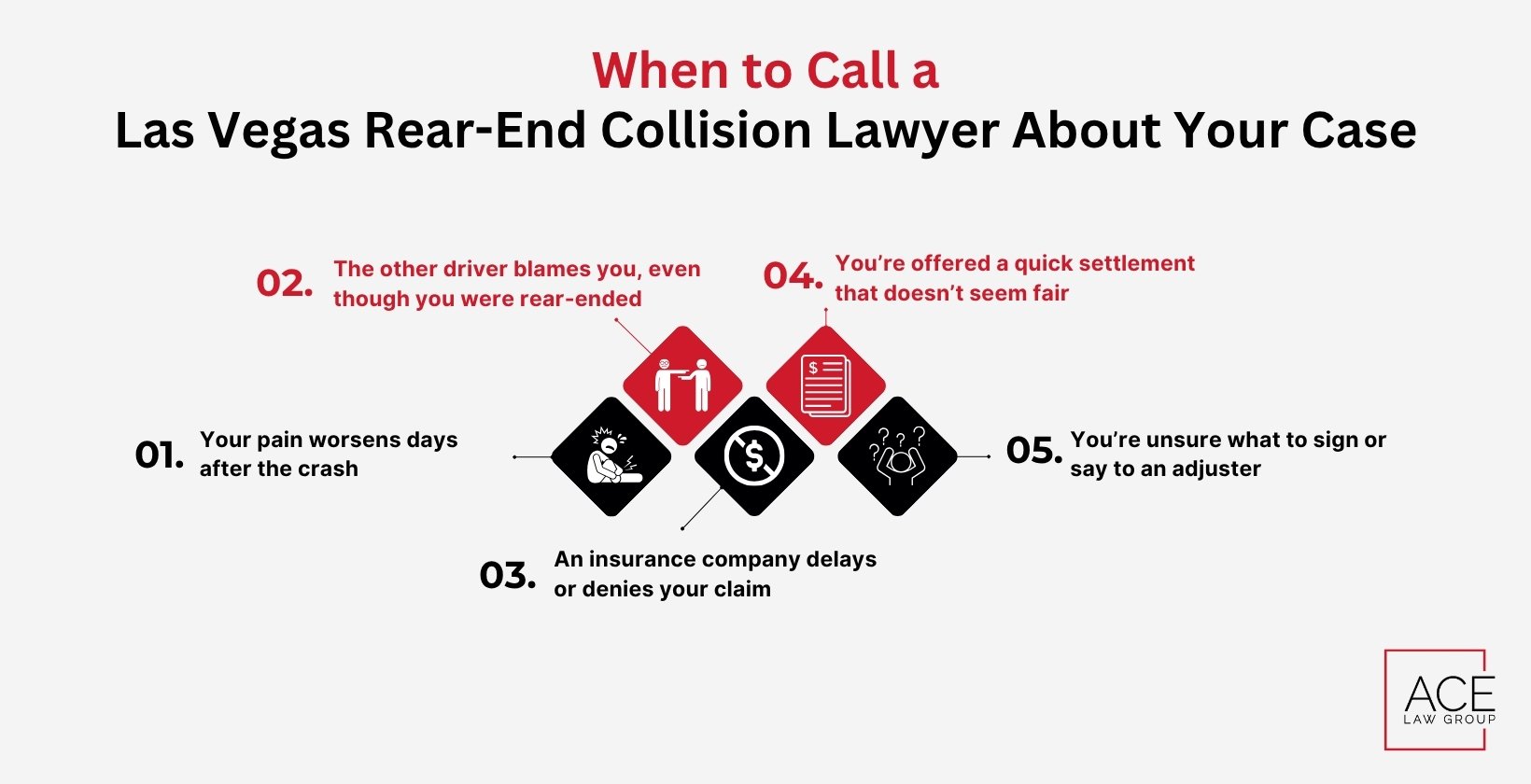
What Legal Fees Should You Expect From a Rear-End Collision Lawyer in Las Vegas?
You don’t have to pay anything up front to hire Ace Law Group. We take rear-end collision cases on a contingency fee basis, which means our fee only comes out of the compensation we recover for you.
There are no hourly rates, no retainers, and no surprise costs. If we don’t win, you don’t owe us anything.
Most contingency fees in Nevada range from 33% to 40%, depending on the case and whether it goes to trial. We’ll explain the exact terms clearly during your free consultation, so you know what to expect before moving forward.
Our goal is to make the process clear – so you can focus on recovery, not billing. Are you ready to get started with No Upfront Costs? Reach out to us for a free consultation.
What Rear-End Collision Types Do Lawyers Handle Most in Las Vegas?
Rear-end collision lawyers handle several common crash types in Las Vegas. Each requires different legal arguments depending on vehicle size, impact speed, and injury severity. Identifying the type helps determine liability, available evidence, and case value.
Low-Speed Bumper-to-Bumper Crashes
Low-speed collisions usually happen in stop-and-go traffic, parking lots, or near intersections. These involve minimal vehicle damage but frequently result in soft tissue injuries, whiplash, or cervical strain.
Insurance companies often dispute these cases, calling them “minor.” Lawyers counter that with diagnostic imaging, medical records, and symptom timelines to show real, documented harm.
High-Speed Rear-Endings on Highways
Rear-end collisions on I-15, I-215, and other Las Vegas highways often involve sudden braking failures or unsafe following distances. The resulting impacts are forceful and commonly cause traumatic brain injuries, fractured vertebrae, or internal bleeding.
To establish liability and injury severity, lawyers rely on:
- Event data recorder (EDR) downloads.
- Crash reconstruction expert reports.
- Highway patrol documentation from LVMPD.
- Physician assessments of high-impact trauma.
These cases often lead to contested liability and require detailed technical evidence to support full damages.
Commercial Truck and Delivery Vehicle Rear-End Crashes
When a delivery truck, 18-wheeler, or commercial fleet vehicle rear-ends a passenger car, the collision often causes extensive injuries and multiple liability layers. These cases involve the driver, the employer, and corporate insurers.
- Driver rest compliance and logs.
- Truck maintenance and inspection records.
- Internal dispatch communications.
- FMCSA violations and employer policy limits.
These collisions require more extensive investigations, knowledge of federal regulations, and a litigation strategy.
Been Involved in a Rear-End Collision with a Commercial Vehicle? We’re Here to Help!Rear-End Collisions Involving Rideshare Vehicles
Rear-end crashes involving Uber or Lyft vehicles raise unique legal questions. These collisions often occur in pickup/drop-off zones, during app-based navigation, or while drivers are actively transporting passengers.
Depending on the app’s status at the time of the crash, different insurance policies may apply. Lawyers investigate:
- Driver activity (logged in, en route, or off-duty).
- Uber or Lyft’s commercial coverage limits.
- GPS data, trip records, and app timestamps.
- Driver negligence and third-party fault.
These cases often involve layered insurance claims and complex fault allocation, especially if multiple vehicles or passengers are involved.
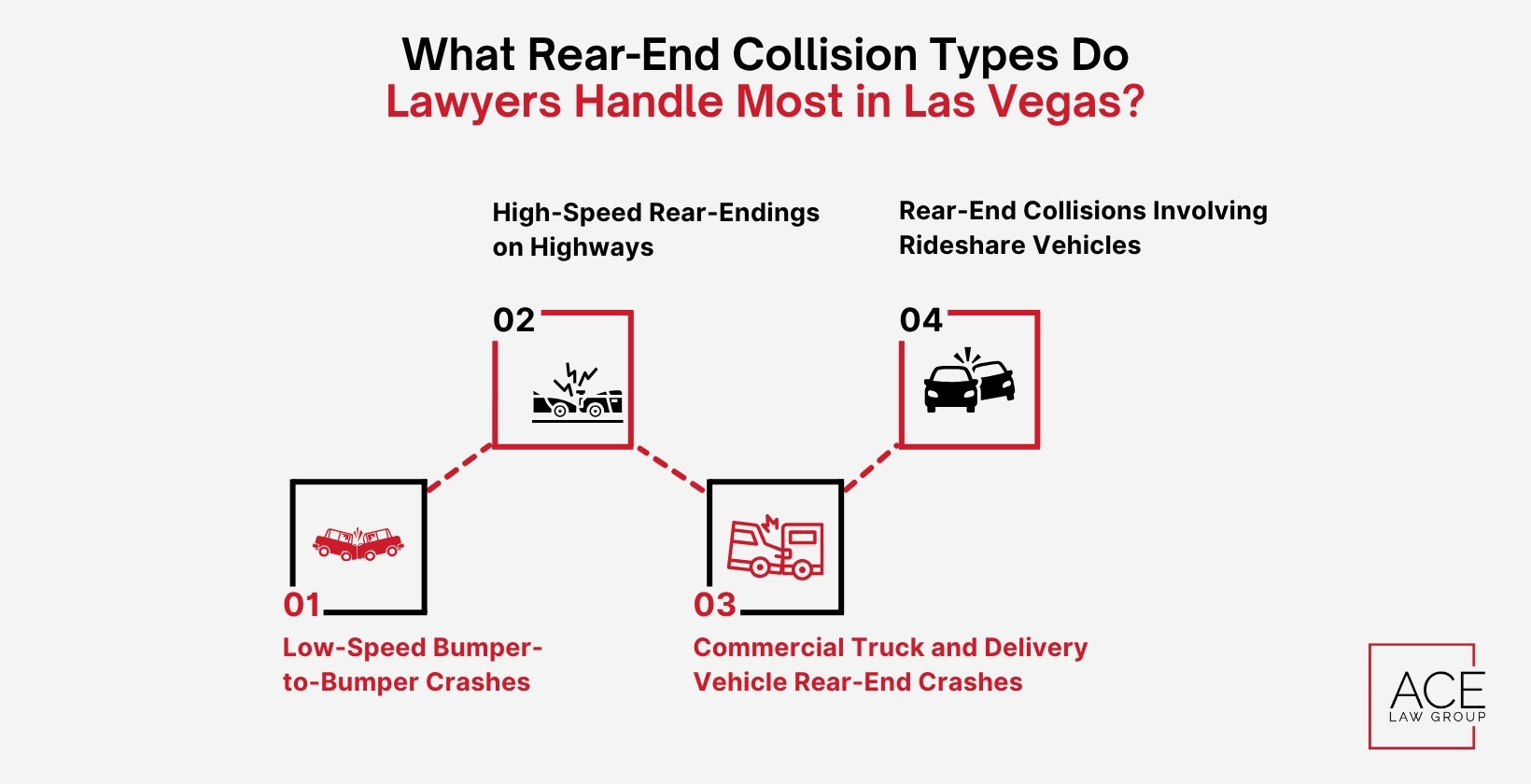
What You Need to Know About Rear-End Collisions in Las Vegas?
Rear-end collisions in Las Vegas happen frequently because of high traffic volume, sudden stops, and distracted drivers, especially near the Strip and other high-density zones. These crashes are often more complex than they first appear.
Understanding how these collisions occur, where they happen, and the resulting injuries helps establish liability and determine fair compensation.
Risky Driving Behaviors That Cause Rear-End Crashes
Rear-end collisions are commonly caused by drivers who follow too closely, fail to react in time, or brake aggressively in traffic. Common causes include:
- Tailgating without a safe stopping distance.
- Distraction from phones, GPS, or passengers.
- Speeding into intersections or highway exits.
- Sudden braking without signaling.
- Brake-checking during driver disputes.
Attorneys use citations, dashcam footage, and witness accounts to connect these actions directly to fault.
Common Locations for Rear-End Accidents
Rear-end collisions are more likely in areas with heavy stop-and-go traffic, signal delays, or limited visibility. High-risk corridors include:
- Interstate 15 (I-15): Especially near Spring Mountain Rd and Tropicana Ave exits.
- Flamingo Road: A high-traffic arterial with constant cross-traffic and merging.
- Las Vegas Boulevard (The Strip): Packed with out-of-town drivers and unpredictable stops.
- Charleston Boulevard: Urban density and school zones create quick braking situations.
- Eastern Avenue & Sahara Avenue Intersections: Known for signal timing issues and multi-lane stacking.
Crash location helps attorneys reconstruct the incident and challenge unfair assumptions about fault.
Typical Injuries From Rear-End Accidents
Rear-end crashes often lead to injuries that develop hours or days later. These injuries can affect work, sleep, or movement even after a low-speed impact. Frequent injuries include:
- Whiplash and muscle strain.
- Disc herniation in the cervical or lumbar spine.
- Concussions or mild traumatic brain injury.
- Anxiety, PTSD, and other psychological symptoms.
Attorneys rely on ER records, specialist reports, and therapy documentation to establish the severity of an injury and support a claim for a full recovery.
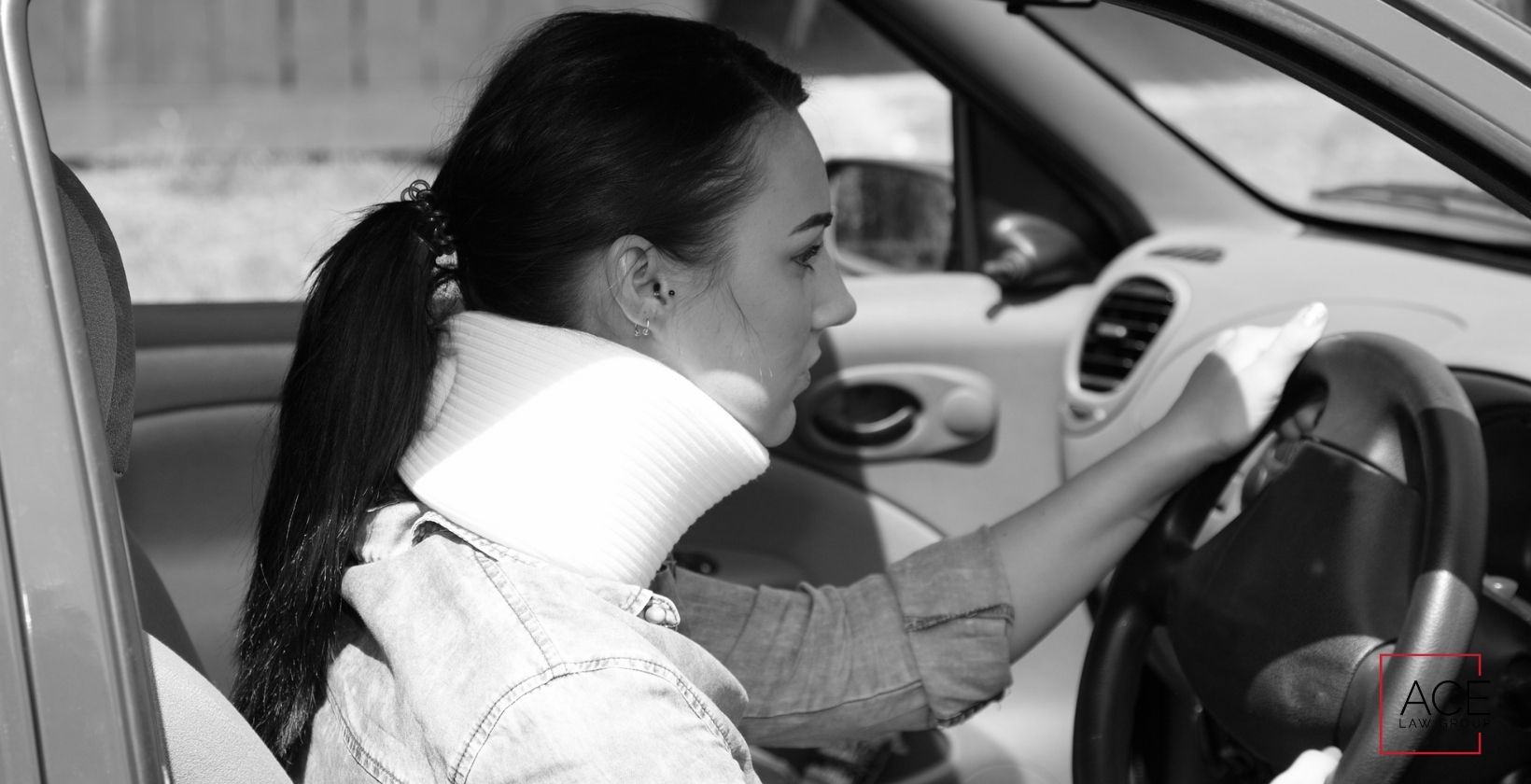
How Do Rear-End Crashes Affect Insurance and Legal Claims?
Rear-end crashes affect your insurance and legal claims by determining how much compensation you can recover and whether your insurance rates go up. These cases do not just involve injuries; they also impact your financial stability, coverage, and long-term record.
Insurers evaluate fault, treatment delays, and medical documentation to decide how much they will pay, or whether to fight the claim. A lawyer helps you protect your claim value by ensuring every step is documented, timely, and supported with legal pressure when needed.
Changes in Insurance Rates After a Rear-End Collision
Rear-end crashes can affect your insurance premiums even when you weren’t at fault. Insurers review the timing of your medical reports, the accuracy of your claim, and fault assignment to decide whether to raise rates or flag your policy.
Example: A driver rear-ended on Sahara Avenue waited two weeks to report neck pain. The insurer called the injury “unrelated,” citing lack of documentation and late notice. Legal representation would have helped document symptoms early and avoid underpayment.
Your lawyer prevents the insurer from mischaracterizing the crash or minimizing your losses, both of which affect future premiums.
Why Documenting Delayed Injury Symptoms Is Crucial?
Injuries from rear-end crashes often emerge hours or days later, especially soft tissue strain, spinal compression, or mild concussions. If you wait too long to document them, insurers will argue they’re unrelated to the accident.
To legally support these symptoms:
- Get a medical evaluation immediately, even with minor pain.
- Track symptoms daily in a journal.
- Keep all imaging results (MRI, CT scans).
- Attend follow-up appointments and complete treatment.
- Request written diagnoses and referrals from your doctor.
Your lawyer organizes this evidence so that it meets legal standards if the case is disputed, delayed, or brought to trial. Without early records, you may lose the chance to claim full damages even if the injuries are real.
What to Do Immediately After a Rear-End Accident in Las Vegas?
To protect your legal rights after a rear-end collision in Las Vegas, follow these five steps. Each one preserves evidence, supports your injury claim, and prevents mistakes that insurers may exploit.
Step 1: Call 911 and Move to a Safe Location
Contact the Las Vegas Metropolitan Police Department (LVMPD) immediately. If the crash occurs on a freeway, request assistance from the Nevada Highway Patrol (NHP). Stay at the scene until officers arrive and complete the accident report.
Step 2: Exchange Information and Document the Scene
Take clear photos of vehicle damage, license plates, street conditions, and visible injuries. Exchange full contact and insurance details with all drivers involved.
Step 3: Limit Conversation and Do Not Admit Fault
Avoid discussing blame at the scene. Do not say “sorry” or speculate about what happened. Your words can be cited later by insurance adjusters.
Step 4: Get a Medical Evaluation the Same Day
Seek immediate medical care even if you feel fine. Delayed symptoms like whiplash, concussions, or back injuries often appear later. Keep all records and discharge notes.
Step 5: Contact a Rear-End Accident Lawyer in Las Vegas
An attorney helps secure evidence, guide communication, and protect your compensation rights. Early legal support prevents mistakes and strengthens your case from the start.
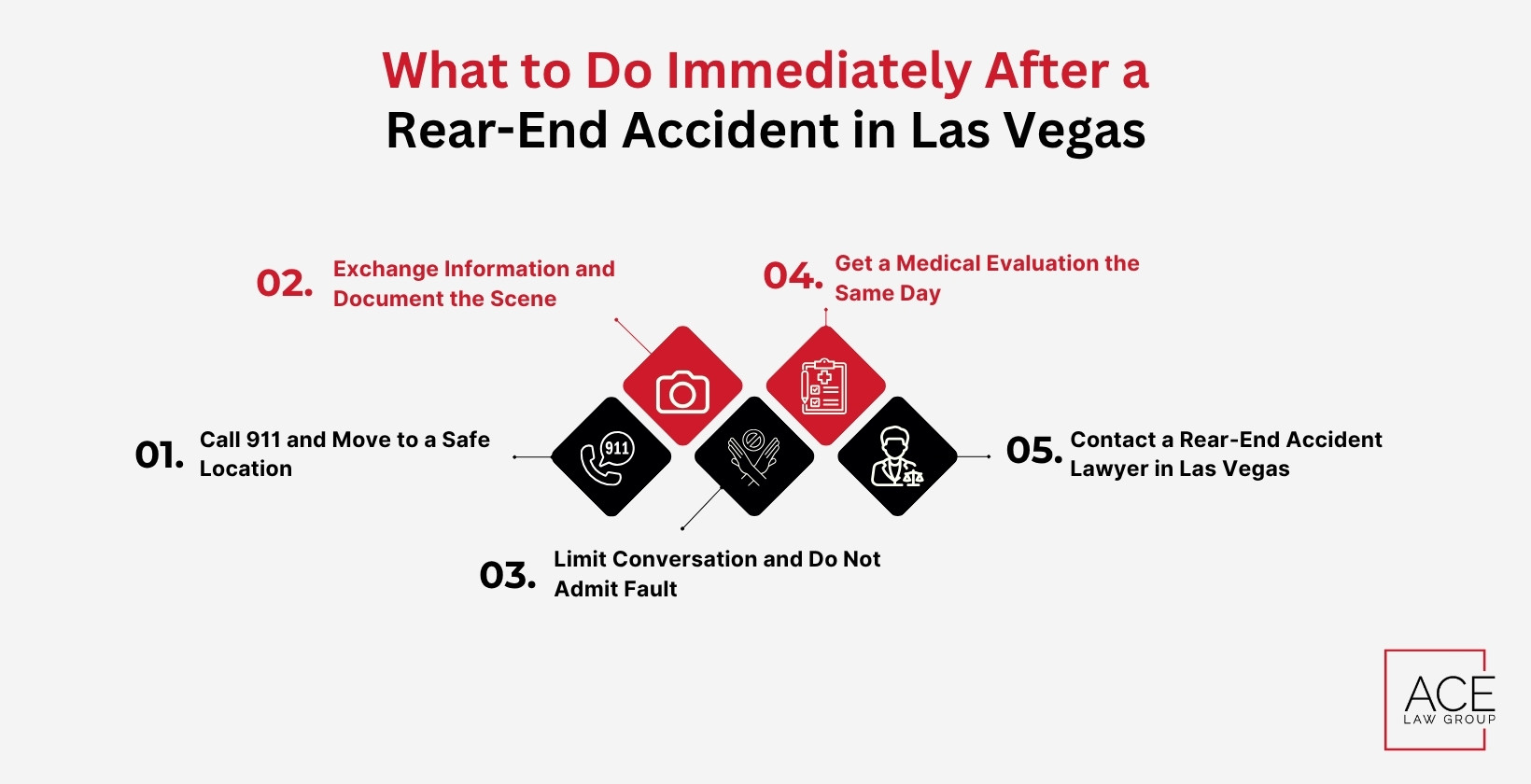
Why Choose Ace Law Group for Your Rear-End Accident Case?
Ace Law Group handles rear-end accident claims across Nevada with legal focus, proven results, and client-first communication. We know how disruptive these crashes are physically, financially, and emotionally, and we approach every case with clarity and preparation.
Here’s what sets us apart when representing rear-end crash victims in Las Vegas:
Proven Results in Rear-End Accident Cases
Our attorneys have recovered millions for victims of rear-end collisions. These include:
- $500,000 jury verdict in a chain-reaction crash with disputed fault.
- Policy-limit settlements for clients with neck injuries and delayed-onset symptoms.
- Six-figure outcomes in soft tissue and spinal trauma cases.
We prepare each case for trial from day one. Our results and recognitions, such as Super Lawyers and a 10.0 AVVO rating, reflect our litigation readiness and commitment to client recovery.
Personalized Legal Support for Each Client
Every client works directly with an attorney, not just staff. We provide:
- One-on-one case planning based on your injuries and goals.
- Frequent case updates and answers to legal and medical questions.
- A low-volume caseload so every client receives full attention.
We’ve built a reputation across Nevada courts for combining personalized support with effective legal action.
No Upfront Legal Fees – Only Pay If You Win
You don’t pay any legal fees unless we win your case. We cover the costs of litigation, experts, and case preparation, and you owe nothing unless compensation is recovered.
- No hourly billing
- No surprise costs
- No pressure to proceed after your consultation
This structure keeps our goals aligned with your results first.
Multilingual Legal Representation in Four Languages
Our team supports clients in English, Spanish, Korean, and Chinese. We provide full legal service, not just interpretation, so you fully understand every step of your case, no matter your language background.
Free Consultations and 24/7 Availability
We’re available when you need us before work, after hours, or on weekends. We offer:
- Free case evaluations
- No-obligation legal advice
- Phone, video, or in-person consultations
Whether your crash happened today or weeks ago, we’re ready to help you take the next legal step.

Car Accident Resources
How to Get Access to a Car Accident Report in Las Vegas?
Car Accident Determining Fault By Location of Damage
Recovering Lost Wages After a Car Accident in Las Vegas
Are Car Accident Insurance Settlements Taxable?
How to Settle a Car Accident Claim Without a Lawyer?
Causes of Car Accidents in Las Vegas
What Happens If You Total a Leased Car in Nevada?
FAQs About Rear-End Collision Claims in Las Vegas
Should I still file a claim if the damage to my car looks minor?
Yes, you should file a claim if the damage looks minor because structural damage or delayed injuries often appear later. Filing early protects your right to compensation and creates an official record of the rear-end crash.
Can I file a rear-end accident claim if I was not wearing a seatbelt?
Yes, you can file a rear-end accident claim without a seatbelt, but your compensation may be reduced. Nevada law applies comparative fault, which adjusts damages based on how the seatbelt affected your injury severity.
What if the driver who hit me does not have insurance?
If the driver who hit you has no insurance, you can file a claim under your uninsured motorist coverage. You may also sue the at-fault driver directly, depending on your policy and the available financial recovery.
How long does it take to settle a rear-end accident claim in Las Vegas?
A rear-end accident claim in Las Vegas typically takes 2 to 8 months. Claims involving disputed fault, complex injuries, or insurer delays take longer. Legal representation often shortens the timeline and improves results.
Do I need a police report to win a rear-end collision case?
Yes, you need a police report to win a rear-end collision case because it documents the crash, supports liability, and strengthens your claim when negotiating with insurers or presenting evidence in court.
What is the average settlement for a rear-end collision in Nevada?
The average settlement for a rear-end collision in Nevada ranges from $15,000 to $100,000. Larger amounts are awarded when injuries involve spinal damage, permanent limitations, or extensive medical treatment.
Speak With a Las Vegas Rear-End Collision Lawyer Today
Rear-end crashes often seem straightforward until medical bills pile up, insurers start pushing low offers, or fault is suddenly disputed. Early legal action can stop these issues before they cost you time, money, or your chance at fair compensation.
At Ace Law Group, we handle rear-end collision cases across Las Vegas, from low-speed injuries to complex, multi-car freeway crashes. We are ready to protect your claim, preserve your evidence, and fight for the compensation you’re owed.
Take the first step today. Call 702-478-3372 or request your free consultation now.
No fees unless we win. Your case deserves action before evidence fades or insurers shape the narrative.
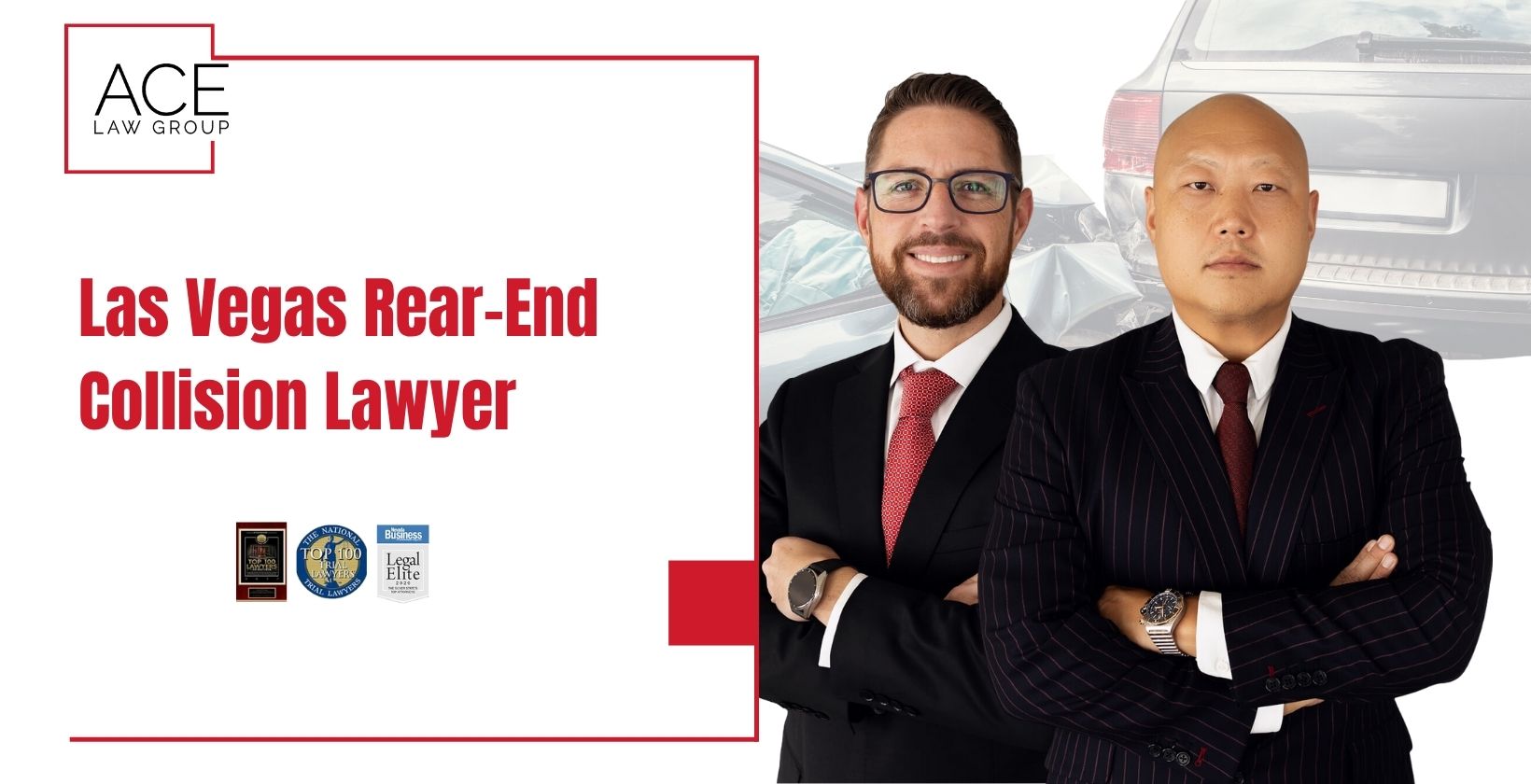
Why Ace Law Group Is Your #1 Choice In Las Vegas?
The National Trial Lawyers: Top 40 Under 40
Avvo’s Clients’ Choice Award Rated 10.0 Superb By Avvo
We Offer FREE Case Evaluations
We Are Fluent In Spanish, Chinese & Korean
Our Team Is Dedicated To Winning
Superior Legal Representation At An Excellent Rate
Arrange A Free Consultation Today
When you retain our services, we will work at your side to identify the most effective strategy according to your unique circumstances. Guided by Patrick W. Kang, our founding attorney, we have compiled a record of success negotiating and litigating a range of personal injury disputes.
Contact Us
Arrange Your Free Personal Injury, Harassment Or Discrimination Claim With Ace Law Group By
Calling us at
or completing our online intake form not including Employment Law Cases
*Some Employment Law Cases Excluded